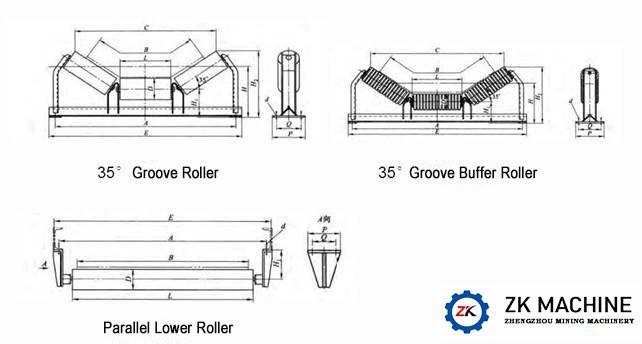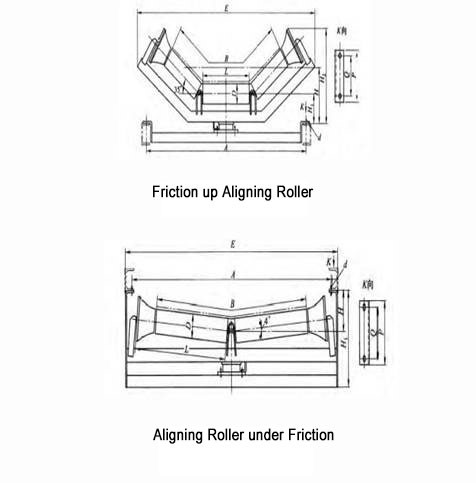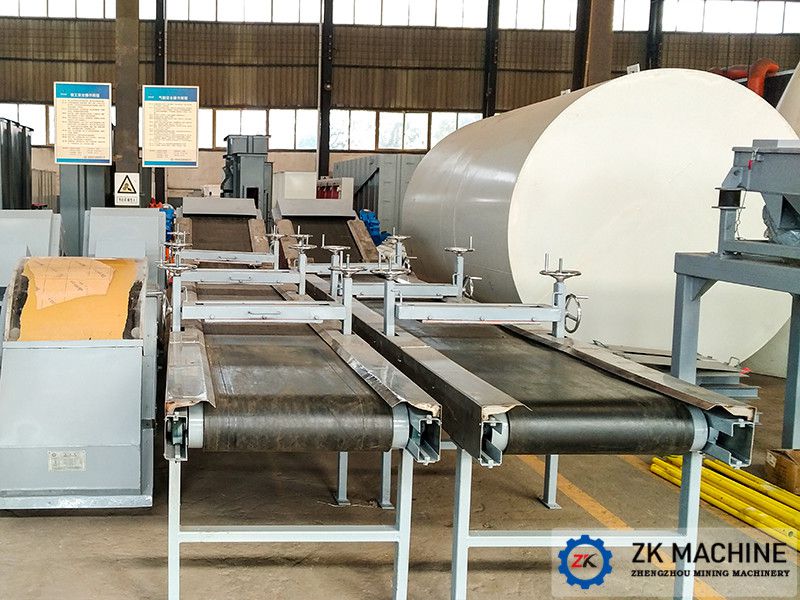Supporting Device of Belt Conveyor
Date:2020-09-21 11:41:04
Author:admin
Views:
198
The conveyor belt between the head and tail rollers is supported by a supporting device to limit the sag of the belt. The most commonly used support device is an idler roller. The main functions of the idler roller are:
(1) Support conveyor belt and load-upper roller;
(2) The conveyor belt supporting the return journey-the lower roller;
(3) Keep the conveyor belt with a certain section shape and running route;
(4) Prevent and correct the deviation of the conveyor belt;
(5) Alleviate the impact of load.
The form, diameter and spacing of the rollers have a great influence on the service life and power consumption of the conveyor belt. Therefore, the following factors must be considered when selecting the roller:
(1) Working conditions;
(2) The nature of the material being transported;
(3) The conveying capacity of the conveyor;
(4) The running speed of the conveyor belt.
There are many types of rollers, but they can be divided into flat rollers and trough rollers. Flat rollers are generally used at unloaded branches, or used to convey pieces of goods, and where plough unloaders are used. When conveying bulk materials, in order to increase the conveying capacity, trough idlers are often used. Trough idlers are generally divided into three sections, and five sections are also useful when the bandwidth is greater than or equal to 1400mm. The trough idlers are shown in the following figure:

The angle between the inclined roller and the horizontal roller is called the groove angle of the grooved roller, which is an important parameter that affects the conveying capacity. The groove angle of the TD75 series belt conveyor in our country is 30°. With the improvement of the conveyor belt structure and the increase of lateral flexibility, the usage of large groove angle idlers has become the development direction. Now the 35° groove angle is generally adopted as standard rollers, the maximum groove angle has reached 60°.

The roller is composed of two parts: roller and bracket. The roller part is composed of a roller body, a shaft, a bearing and a sealing device, and the structural dimensions and models of each part have been standardized. The roller body is made of steel pipe or cast iron. The diameter of the roller is determined by the bandwidth. When the bandwidth is less than or equal to 800mm, the roller diameter is 89mm; when the bandwidth is greater than or equal to 1000mm, the roller diameter is 108mm. When working, the roller shaft is stationary, and two top planes are milled at each end of it and inserted into the groove of the bracket. Most roller bearings use ball bearings. Roller bearings are used only under heavy loads and sliding bearings are rarely used. In order to reduce the rotation resistance of the idler as much as possible, a sealing device must be used to prevent dirt from entering the bearing and prevent lubricant from flowing out of the bearing. The sealing device usually adopts packing labyrinth seal, which has a simple structure and good sealing performance. The roller bracket is generally welded or stamped.
At the feeding place, in order to reduce the impact of the material on the conveyor belt, a buffer roller should be used first. For conveyors longer than 50 meters, the deviation of the conveyor belt often occurs due to various reasons. In order to avoid this phenomenon, the supporting rollers can be equipped with a set of self-aligning rollers every 10 groups. Set up a set of self-aligning rollers every 5-10 groups of rollers on the unloaded branch.



